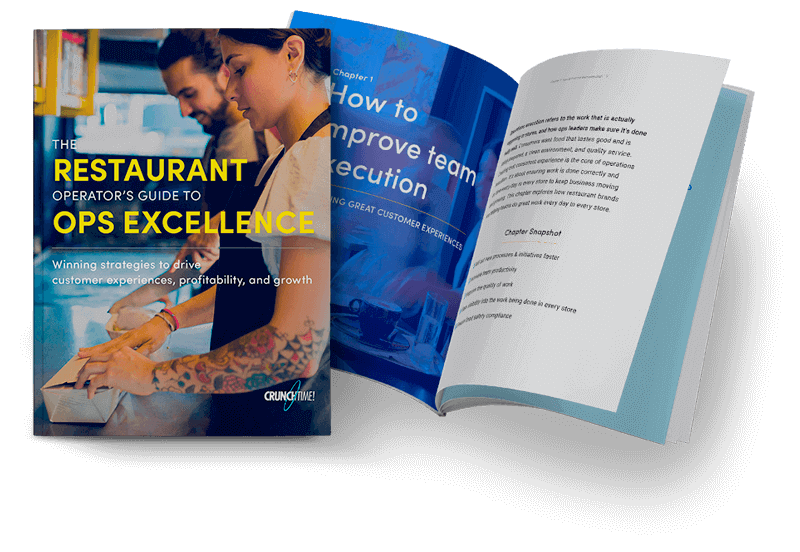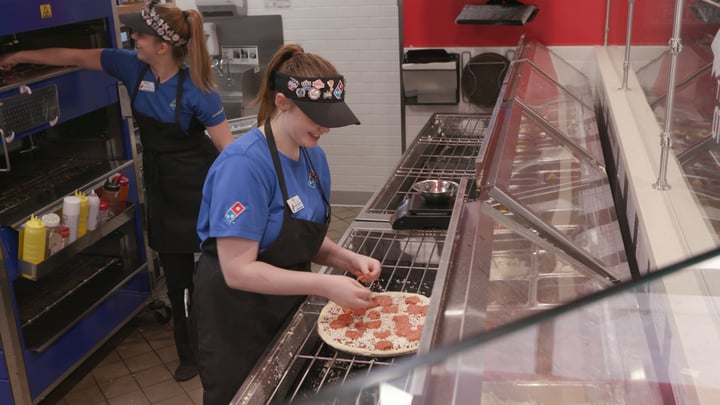
- Home
- Crunchtime Blog
- 2 Factors that Will Determine Restaurant Ops Success in 2023, and How to Achieve Them

2 Factors that Will Determine Restaurant Ops Success in 2023, and How to Achieve Them
You know that stomach-in-your-throat sinking feeling right as a rollercoaster drops?
Imagine feeling it for three years straight.
Welcome to life as a restaurant operator.
The pandemic was a ride that no one asked to get on, filled with long, nerve-racking ups and downs with unexpected twists at every turn. The last three years saw more change than the previous three decades combined.
And even with the brunt of the pandemic behind us, restaurant and foodservice operators continue to face new and difficult challenges from its fallout. From staffing shortages and rising wages to supply chain unpredictability and higher food costs, the ride is far from over, with many more wrenching highs and lows that lay ahead because:
- Customer expectations are higher than they’ve ever been and continue to evolve quickly, with everyone getting much more comfortable ordering online, embracing (and expecting) delivery, pick-up, or drive-thru options
- Field teams are being asked to do more than ever before while managing more locations
- Area managers and store managers need to be able to communicate and share information instantly
- Every store must be able to change and align teams more quickly
- Ops leaders need tighter controls and access to the right data to make better decisions
- Lean, inexperienced teams need the tools to do their jobs well and even automate aspects of the operation so that every employee, manager, and leader can be more productive.
So, how do you put your organization in a position to thrive in this quickly evolving environment?
Two factors will ultimately determine the growth and success of your restaurant operation:
1. Delivering against your brand promise, every time to drive consistently great experiences
2. Managing every location profitably by controlling food and labor costs
While the need for consistency and profitability across a business existed long before the pandemic, this sudden industry-wide shift has shed new light on the importance of modern processes, technology, and automation to achieve operational excellence in every location.
We’ve reached a point where the “old way” of operating creates real problems. Whether you have dozens, hundreds, or thousands of locations, the fundamentals of running a multi-unit restaurant haven’t changed much, but how those fundamentals are executed has changed tremendously. Doing great work in stores, tracking inventory, training, and scheduling staff – this all had to be done 30 years ago, just as it does today. But this same work today must be done better and faster, with fewer people and resources available to do it.
But how?
How do you deliver on your brand promise every visit?
Your ability to consistently deliver on your brand promise is what separates great brands from average ones.
So, how do you ensure that as you grow, you’re able to meet your customers’ expectations – quality, cleanliness, etc. – every time they walk into one of your restaurants? Delivering experience requires hiring the right people and training them to do their jobs well, and then equipping them to execute.

Here’s what that looks like:
- Making sure everyone is aware and aligned when you roll out new or updated processes or new initiatives like LTOs.
- Maintaining visibility into the work happening at the store level, and being confident that all your standard operating procedures are being done correctly and on time – especially temp logs, sanitization, and other critical food safety protocols.
- Ensuring new hires can be trained up and “shift-ready” as fast as possible, so everyone knows how to do their jobs well – and to get ahead of costly employee churn, you need to prepare them for their next role, so they have a reason to stay.
All of these things collectively determine if, on any given day, in any given location, a particular restaurant employee knows what to do, when to do it, and how to do their job to deliver the brand the experience your customers expect.
How do you manage profitability in every location?
Accomplishing this starts with getting a handle on the two most expensive costs that are in your control - food and labor:
- On the food cost side of the equation, it’s about always knowing how much inventory you have on hand so you’re prepared to meet demand, having a real-time grasp of your actual vs. theoretical food costs, and knowing if your suppliers are giving you the products you were expecting (vs. substitutes) at the prices you expected to pay.
- On the labor costs side of the house, it’s being able to easily schedule exactly just the right number and mix of employees for each shift while staying in compliance with local labor laws and regulations.

Restaurant leaders need new strategies to win in this challenging and competitive landscape.
Managing day-to-day profitability, food safety, brand standards, and the overall customer experience across locations has always been difficult but is now even more challenging given the speed of change in the industry.
To deliver great customer experiences every visit and manage profitability in every location, top restaurant brands:
- Enable teams to do great work every day in every store and ensure that work is done correctly and on time
- Improve inventory management to track food costs, P&L, and keep customers happy
- Combat high turnover and increase employee retention with accelerated learning and development
- Optimize staffing in each store to serve customers without exceeding cost expectations
The Restaurant Operator’s Guide to Ops Excellence acts as a framework for restaurant leaders in their pursuit of ops excellence, with inspiration for how to help their organizations grow and succeed in an increasingly complex environment.
Download your free guide to explore the best practices and strategies needed to drive great customer experiences, profitability, and growth and how to accomplish these things – deeply, and effectively - together in one platform.
Share this post
Related


3 Ways Domino’s Largest Franchise Promotes Operational Consistency


